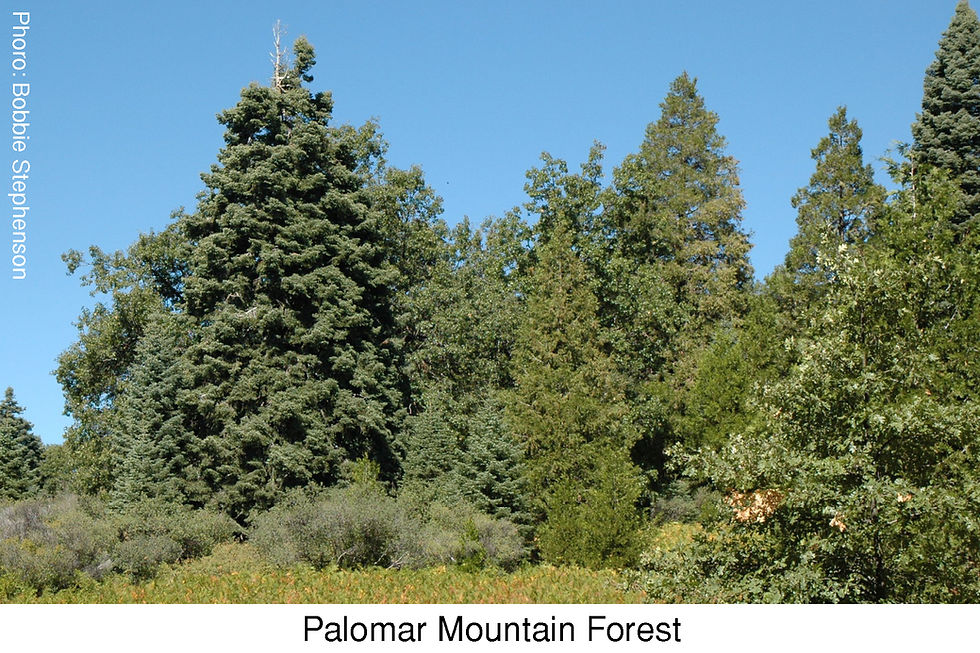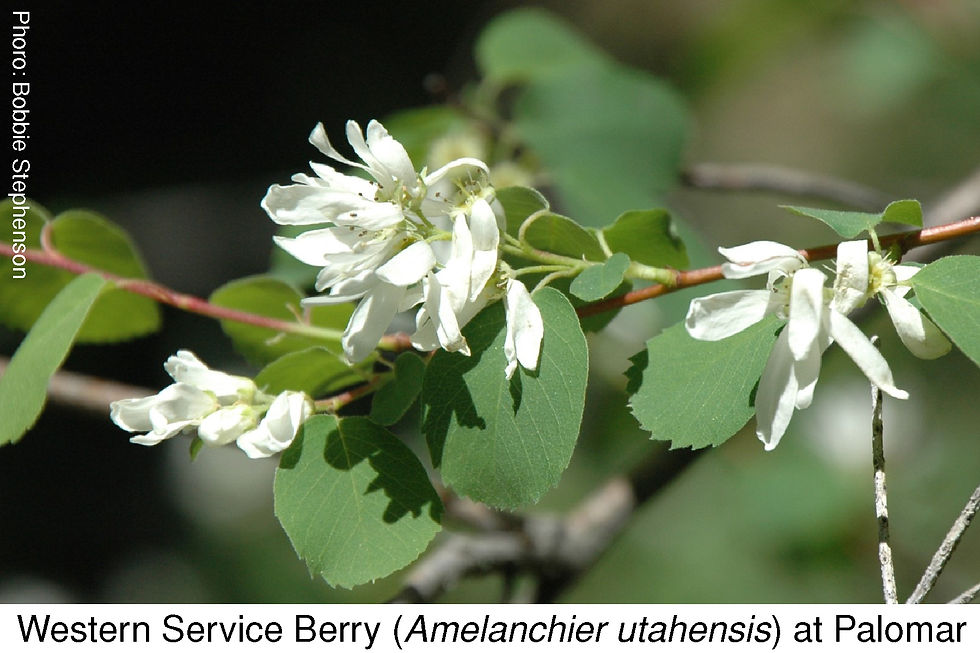GOING WILD WITH NATIVES: Sky Islands
- Rachel Cobb
- Aug 1, 2019
- 2 min read
Updated: Sep 1, 2019

By Bobbie Stephenson.
Other than Torrey Pines State Natural Reserve near the coast, San Diego only has coniferous forests on its highest mountains, above an elevation of 3,500 feet. These high elevation forests exist at the tops of Palomar, Volcan, Hotsprings, Cuyamaca, and Laguna Mountains. Disconnected from each other by drier habitats, they are referred to as sky islands, which are remnants of widespread forests that grew in the Pleistocene, about 20,000–10,000 years ago. When the climate became warmer and drier after the Pleistocene, the local chaparral plant communities spread upward in elevation, restricting the expanse of forests and causing the forests at the tops of the mountains to become isolated from each other. Just as the Hawaiian Islands are the tops of mountains rising above the sea, sky islands are the tops of mountains rising above a sea of dry elevation plant communities. In our region the sea is usually chaparral.
The term ‘sky islands’ was first used to refer to the tops of the mountains in southern Arizona and New Mexico where relic populations of coniferous forests were isolated after the Pleistocene. In 1943, Natt N. Dodge, in an article in the magazine Arizona Highways, referred to the Chiricahua Mountains in southeastern Arizona as a "mountain island in a desert sea.” In 1967 a nature writer named Weldon Heald used the term for the title of his book describing the life zones (biomes) he encountered when driving up a mountain, from the desert to the forest. Each life zone has its own complement of plants and animals.
When the concept of mountain tops as islands, and so subject to the theory of island biogeography, caught on with scientists and natural history writers like David Quammen and John McPhee, the word was out. Sky islands is now a term used around the world for mountains, other highlands, and even topographic massifs that are separated from each other by lowland vegetation.

The isolation of sky islands results in endemism (being native and restricted to a certain area) and speciation of plants and animals because they are isolated from their earlier, more widespread relatives. The oceanic Galápagos Islands of Ecuador are a prime example of speciation by isolation. The same happens on sky islands.
Isolated species are vulnerable to habitat loss. Climate changes increases their vulnerability. As summers get drier and hotter, species move upward in elevation to compensate for changing temperatures. When high elevation temperatures get too hot for the species living there, the species will die out, unless, like birds, they can disperse to other higher sky islands.
Our regional sky islands are interesting areas, with species that cannot be found at lower elevations. During the hot summer, take a drive up to the top of one of our mountains and enjoy the shade of the trees and the cooler temperatures.
Bobbie Stephenson is the Newsletter Editor and current Vice President of the San Diego Chapter of the California Native Plant Society.
